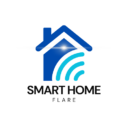Table of Contents
Assessing Your Home’s Needs
Before diving into a smart home remodeling project, it’s crucial to assess your home’s current state and identify areas where smart technologies can make a significant difference. Here’s how to effectively evaluate your home’s needs:
Identify Pain Points
Begin by identifying pain points or areas in your home where traditional systems or setups may be inefficient or outdated. These could include:
- Energy Consumption: Evaluate your home’s energy usage patterns and identify opportunities to optimize energy efficiency.
- Security Concerns: Assess the current security measures in place and identify any vulnerabilities that could be addressed with smart security systems.
- Convenience and Comfort: Consider aspects of your daily routine that could be simplified or enhanced with smart technologies, such as lighting, temperature control, or entertainment systems.
Prioritize Areas for Improvement
Once you’ve identified potential areas for improvement, prioritize them based on their impact and feasibility. Consider factors such as:
- Frequency of Use: Focus on areas of your home that are used frequently and would benefit the most from smart upgrades.
- Cost-Benefit Analysis: Evaluate the cost-effectiveness of implementing smart technologies in each area and prioritize based on the potential return on investment.
- Long-Term Goals: Align your remodeling priorities with your long-term goals for your home, such as increasing energy efficiency, enhancing security, or improving overall comfort and convenience.
Research Smart Home Solutions
Next, research available smart home solutions that address the identified needs of your home. This could include:
- Smart Thermostats: Explore smart thermostats that offer energy-saving features and remote temperature control capabilities.
- Home Security Systems: Look into smart security cameras, motion sensors, and smart locks that provide enhanced security and remote monitoring options.
- Smart Lighting: Consider smart lighting solutions that offer customizable lighting schedules, energy-efficient LED bulbs, and compatibility with voice control systems.
- Integrated Smart Home Hubs: Explore smart home hubs that centralize control of various smart devices and systems, providing seamless integration and automation.
Consider Scalability and Compatibility
When assessing your home’s needs, consider the scalability and compatibility of smart home solutions. Ensure that the chosen devices and systems can be easily integrated with existing infrastructure and expanded upon in the future as technology evolves.
Seek Professional Guidance
Finally, consider seeking professional guidance from smart home experts or consultants who can provide valuable insights and recommendations based on your specific needs and budget. They can help you navigate the myriad of smart home options available and ensure that your remodeling project aligns with your goals and priorities.
By carefully assessing your home’s needs and prioritizing areas for improvement, you can lay a solid foundation for a successful smart home remodeling project that enhances comfort, convenience, and efficiency in your living space.

Planning Your Smart Home Remodel
Planning is a critical phase of any smart home remodeling project. By setting clear objectives and goals, researching the latest trends, and consulting with experts, you can ensure a successful transformation of your living space into a smart home. Here’s how to effectively plan your smart home remodel:
Set Clear Objectives and Goals
Begin by defining your objectives and goals for the smart home remodel. Consider what you hope to achieve with the integration of smart technologies:
- Enhanced Convenience: Do you want to streamline daily tasks and routines with automation and remote control capabilities?
- Improved Energy Efficiency: Are you aiming to reduce energy consumption and lower utility bills with smart energy management systems?
- Enhanced Security: Do you prioritize the implementation of smart security solutions to protect your home and family?
- Upgrade Lifestyle: Are you looking to elevate your lifestyle with entertainment enhancements, such as smart home theaters or audio systems?
Clearly outlining your objectives will guide the decision-making process and ensure that the remodel aligns with your vision for your smart home.
Research the Latest Smart Home Trends and Innovations
Stay informed about the latest smart home trends and innovations by researching online resources, attending home technology expos, and exploring smart home product reviews. Consider aspects such as:
- Emerging Technologies: Stay abreast of emerging smart home technologies that offer improved functionality and convenience.
- User-Friendly Interfaces: Look for smart home devices and systems with intuitive user interfaces and seamless integration capabilities.
- Interoperability: Prioritize interoperable smart devices and systems that can communicate with each other to create a cohesive smart home ecosystem.
Gathering insights into the latest trends will help you make informed decisions during the planning phase of your smart home remodel.
Consult with Experts and Professionals
Seek guidance from smart home experts and professionals who can provide valuable insights and recommendations based on their expertise and experience. Consider consulting with:
- Smart Home Contractors: Engage with contractors experienced in smart home remodeling projects who can offer advice on implementation and integration.
- Technology Consultants: Seek guidance from technology consultants who can assess your home’s infrastructure and recommend suitable smart home solutions.
- Interior Designers: Collaborate with interior designers who can help seamlessly integrate smart technologies into your home’s aesthetics and design.
By leveraging the expertise of professionals, you can ensure that your smart home remodel is executed efficiently and meets your expectations.
Budget Appropriately for Smart Home Remodeling
Allocate a realistic budget for your smart home remodel, taking into account the cost of smart devices, installation fees, and any additional expenses. Consider the long-term savings potential of energy-efficient smart technologies and prioritize investments accordingly.
Create a Comprehensive Remodeling Plan
Develop a comprehensive remodeling plan that outlines the scope of work, timeline, and milestones for your smart home remodel. Include details such as:
- Room-by-Room Upgrades: Specify the smart home upgrades planned for each room, considering factors such as functionality, aesthetics, and budget.
- Integration and Automation: Outline plans for integrating smart devices and systems, as well as automation scenarios to enhance convenience and efficiency.
- Installation and Testing Procedures: Define procedures for the installation, configuration, and testing of smart home technologies to ensure optimal performance.
By creating a detailed remodeling plan, you can effectively manage the project and ensure that all aspects of your smart home remodel are executed according to your specifications.
By following these steps and dedicating time to thorough planning, you can lay the groundwork for a successful smart home remodel that enhances comfort, convenience, and efficiency in your living space.
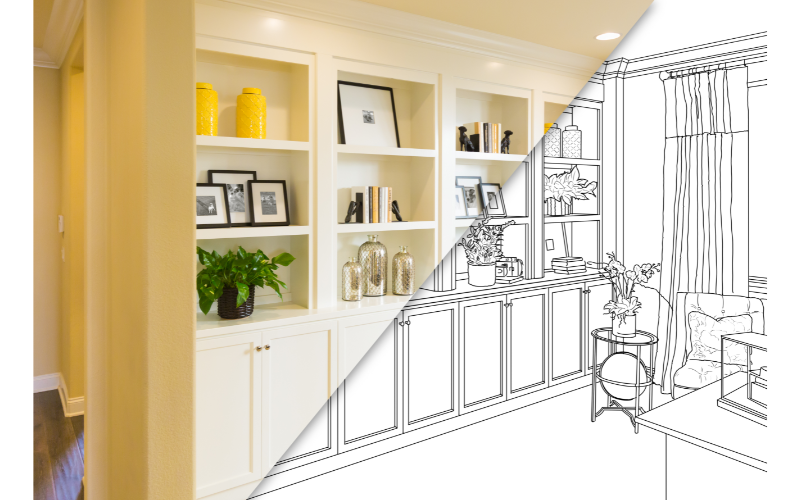
Smart Home Remodeling Ideas
When it comes to smart home remodeling, the possibilities are endless. From kitchen upgrades to bathroom innovations and entertainment enhancements, integrating smart technologies can revolutionize the way you interact with your living space. Here are some smart home remodeling ideas to consider:
Kitchen Upgrades for Efficiency and Convenience
The kitchen is often the heart of the home, and integrating smart technologies can enhance both functionality and convenience:
- Smart Appliances: Invest in smart appliances such as refrigerators, ovens, and dishwashers equipped with Wi-Fi connectivity and advanced features like remote monitoring and control.
- Voice-Activated Assistants: Install voice-activated assistants like Amazon Alexa or Google Assistant to control kitchen appliances, set timers, and access recipes hands-free.
- Smart Lighting: Implement smart lighting solutions that offer customizable settings for different tasks and ambiance, enhancing both functionality and aesthetics in the kitchen.
Bathroom Innovations for Comfort and Relaxation
Transform your bathroom into a luxurious oasis with the following smart upgrades:
- Smart Showers: Install smart shower systems with customizable temperature settings, water pressure control, and integrated speakers for a personalized showering experience.
- Smart Mirrors: Upgrade to smart mirrors equipped with built-in LED lighting, anti-fog technology, and touchscreen interfaces for accessing weather updates, news, and more.
- Water-Saving Fixtures: Incorporate water-saving fixtures such as smart faucets and toilets equipped with sensors and programmable settings to conserve water and reduce utility costs.
Living Room and Entertainment Enhancements
Elevate your living room entertainment experience with cutting-edge smart technologies:
- Home Theater Systems: Create a cinematic experience with a state-of-the-art home theater system featuring high-definition projectors, surround sound speakers, and smart streaming devices.
- Smart TVs: Invest in smart TVs with built-in streaming capabilities, voice control functionality, and compatibility with virtual assistants for seamless integration into your smart home ecosystem.
- Smart Furniture: Consider smart furniture options such as recliners with built-in massage and heating features, coffee tables with wireless charging pads, and adjustable lighting settings for added comfort and convenience.
Bedroom Technologies for Better Sleep and Comfort
Optimize your bedroom for relaxation and restful sleep with the following smart home upgrades:
- Smart Mattresses: Invest in smart mattresses equipped with sensors that monitor sleep patterns, temperature regulation, and adjustable firmness settings for personalized comfort.
- Smart Lighting and Shades: Install smart lighting systems and motorized shades that automatically adjust brightness and ambiance to promote relaxation and improve sleep quality.
- White Noise Machines: Incorporate white noise machines or smart speakers with built-in sleep sounds to mask external noises and create a tranquil sleep environment.
Outdoor Living Spaces with Smart Features
Extend your smart home experience to outdoor living spaces with the following enhancements:
- Smart Outdoor Lighting: Install smart outdoor lighting fixtures with motion sensors and programmable settings to enhance security and ambiance while reducing energy consumption.
- Smart Irrigation Systems: Opt for smart irrigation systems equipped with weather sensors and Wi-Fi connectivity to automatically adjust watering schedules based on weather conditions and soil moisture levels.
- Outdoor Entertainment Systems: Create an outdoor entertainment oasis with weatherproof smart speakers, outdoor TVs, and streaming devices for seamless entertainment experiences.
By incorporating these smart home remodeling ideas into your home renovation plans, you can create a modern, efficient, and connected living space that enhances comfort, convenience, and overall quality of life.

Choosing Smart Home Devices and Systems
Selecting the right smart home devices and systems is crucial for creating a cohesive and efficient smart home ecosystem. With a plethora of options available on the market, it’s essential to consider factors such as compatibility, functionality, and scalability. Here’s how to choose the best smart home devices and systems for your needs:
Home Automation Systems
Home automation systems serve as the backbone of your smart home, allowing you to control and automate various devices and systems from a centralized interface. Consider the following factors when choosing a home automation system:
- Compatibility: Ensure that the home automation system is compatible with a wide range of smart devices and protocols, allowing for seamless integration.
- Scalability: Choose a scalable system that can accommodate future expansions and additions to your smart home ecosystem.
- User-Friendly Interface: Look for a user-friendly interface with intuitive controls and customizable automation settings to suit your preferences and lifestyle.
Popular home automation systems include platforms like Apple HomeKit, Google Home, Amazon Alexa, and Samsung SmartThings.
Smart Lighting Solutions
Smart lighting solutions offer convenience, energy savings, and ambiance control. When selecting smart lighting products, consider the following:
- Compatibility: Choose smart bulbs or lighting systems that are compatible with your chosen home automation platform for seamless integration and control.
- Energy Efficiency: Opt for energy-efficient LED bulbs and smart lighting systems that allow for customizable schedules, dimming capabilities, and remote control options to reduce energy consumption.
- Additional Features: Explore smart lighting options with additional features such as color-changing capabilities, motion sensors, and compatibility with voice assistants for added convenience and versatility.
Popular smart lighting brands include Philips Hue, LIFX, and GE C by GE.
Security and Surveillance Options
Enhancing home security with smart devices and surveillance systems provides peace of mind and protection against potential threats. Consider the following when choosing security and surveillance options:
- Camera Resolution and Features: Select security cameras with high-definition resolution, wide-angle lenses, night vision capabilities, and motion detection features for optimal surveillance.
- Cloud Storage and Monitoring: Choose security systems with cloud storage options and remote monitoring capabilities, allowing you to access footage and receive alerts from anywhere.
- Integration with Security Systems: Ensure that security cameras and surveillance systems integrate seamlessly with your chosen home automation platform and compatible smart devices for comprehensive security coverage.
Popular security and surveillance brands include Ring, Arlo, Nest, and Blink.
Energy Management Systems
Energy management systems help monitor and optimize energy usage in your smart home, leading to cost savings and environmental sustainability. Consider the following when choosing energy management systems:
- Smart Thermostats: Invest in smart thermostats with learning capabilities, energy-saving features, and remote control options to optimize heating and cooling efficiency.
- Energy Monitoring Devices: Choose energy monitoring devices that provide real-time insights into energy usage patterns and identify opportunities for conservation and efficiency improvements.
- Integration with Utility Providers: Look for energy management systems that integrate with utility providers and offer insights into energy tariffs, peak usage hours, and potential savings opportunities.
Popular energy management brands include Nest, ecobee, and Sense.
By carefully selecting smart home devices and systems that meet your specific needs and preferences, you can create a connected and efficient living environment that enhances comfort, convenience, and security for you and your family.
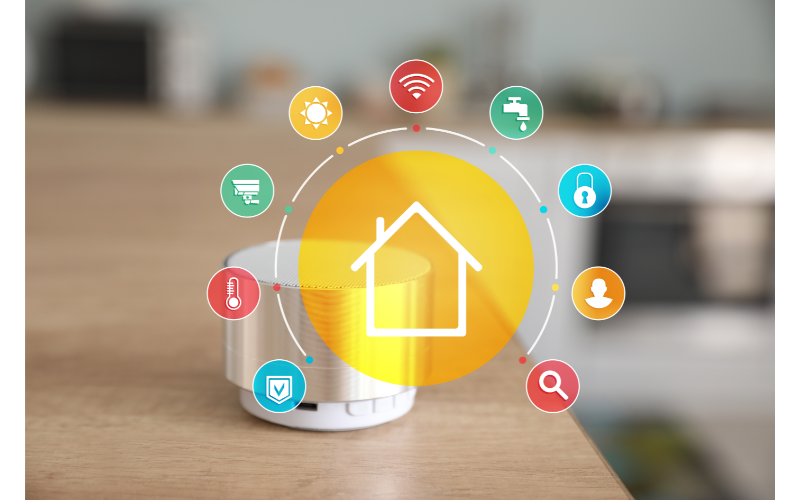
Implementing Your Smart Home Remodel
Implementing your smart home remodel requires careful planning, coordination, and attention to detail to ensure a seamless integration of smart technologies into your living space. Here are the key steps to effectively implement your smart home remodel:
Hiring Contractors and Installation Teams
Start by hiring experienced contractors and installation teams with expertise in smart home technologies. Consider the following when selecting professionals for your project:
- Credentials and Experience: Look for contractors and installation teams with relevant certifications and a proven track record of successful smart home installations.
- References and Reviews: Seek recommendations from trusted sources and review online testimonials and reviews to assess the reputation and reliability of potential contractors.
- Specialized Skills: Choose professionals with specialized skills and knowledge in the installation and configuration of smart devices and systems, ensuring quality workmanship and optimal performance.
Managing the Remodeling Process
Effectively manage the remodeling process to ensure timely completion and adherence to your project specifications. Consider the following tips for successful project management:
- Establish Clear Communication Channels: Maintain open communication channels with contractors and installation teams to address any questions, concerns, or changes throughout the remodeling process.
- Monitor Progress and Milestones: Regularly monitor progress and milestones to track the status of the project and identify any potential delays or issues that need to be addressed.
- Flexibility and Adaptability: Remain flexible and adaptable to unforeseen challenges or adjustments that may arise during the remodeling process, allowing for timely resolutions and adjustments as needed.
Testing and Troubleshooting Smart Systems
After the installation of smart devices and systems, thorough testing and troubleshooting are essential to ensure proper functionality and performance. Consider the following steps for testing and troubleshooting:
- Comprehensive Testing Procedures: Develop a comprehensive testing plan that includes testing individual devices, system integrations, and automation scenarios to identify any issues or inconsistencies.
- User Training and Education: Provide user training and education to household members on the operation and functionality of smart devices and systems, ensuring they understand how to maximize their benefits.
- Addressing Issues Promptly: Promptly address any issues or malfunctions identified during testing, working closely with contractors and installation teams to implement necessary repairs or adjustments.
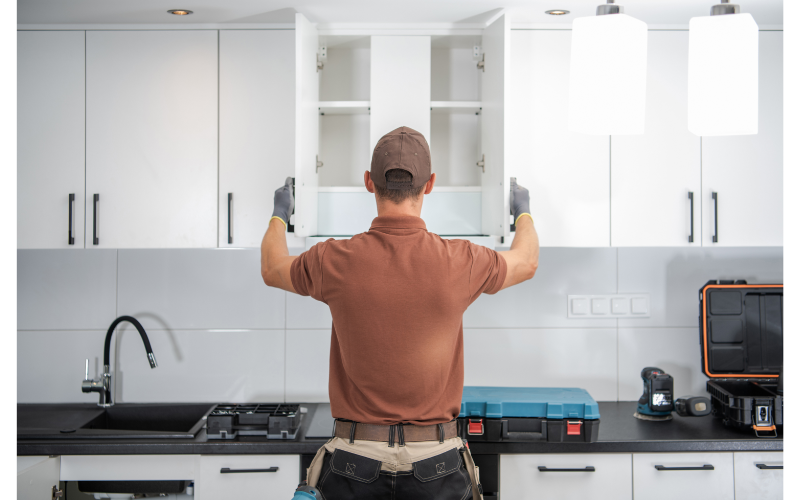
Maximizing Efficiency and Sustainability
Maximizing efficiency and sustainability is at the core of smart home remodeling. By integrating energy-efficient technologies and sustainable practices, you can reduce your environmental footprint and lower utility costs. Here’s how to maximize efficiency and sustainability in your smart home remodel:
Energy-Efficient Appliances and Fixtures
Invest in energy-efficient appliances and fixtures to reduce energy consumption and lower utility bills. Consider the following when selecting energy-efficient products:
- Energy Star Certification: Look for appliances and fixtures with Energy Star certification, indicating that they meet strict energy efficiency guidelines set by the Environmental Protection Agency.
- Advanced Features: Choose appliances with advanced features such as programmable settings, energy-saving modes, and smart capabilities that allow for optimized energy usage.
- Water-Saving Fixtures: Opt for water-saving fixtures such as low-flow toilets, faucets, and showerheads to conserve water without sacrificing performance or comfort.
Sustainable Materials and Design Practices
Embrace sustainable materials and design practices to minimize environmental impact and promote eco-friendly living. Consider the following sustainable options:
- Recycled and Renewable Materials: Use recycled and renewable materials such as reclaimed wood, bamboo, and recycled glass in your remodeling projects to reduce waste and promote resource conservation.
- Low-VOC Products: Choose low-VOC (volatile organic compound) paints, adhesives, and finishes to improve indoor air quality and minimize exposure to harmful chemicals.
- Passive Design Strategies: Incorporate passive design strategies such as natural ventilation, daylighting, and thermal mass to enhance comfort and reduce reliance on mechanical heating and cooling systems.
Smart Energy Management Systems
Implement smart energy management systems to monitor and optimize energy usage throughout your home. Consider the following smart energy solutions:
- Smart Thermostats: Install smart thermostats that learn your heating and cooling preferences, adjust temperatures based on occupancy, and provide energy usage insights to help you make informed decisions.
- Energy Monitoring Devices: Use energy monitoring devices and smart plugs to track energy consumption of individual appliances and devices, allowing you to identify energy-hungry appliances and implement energy-saving strategies.
- Solar Panels and Renewable Energy Sources: Consider installing solar panels or integrating renewable energy sources such as wind or geothermal energy to generate clean, sustainable power for your home.
Behavioral Changes and Smart Habits
In addition to technology and design considerations, adopt smart habits and behavioral changes to further enhance efficiency and sustainability:
- Energy-Conscious Practices: Implement energy-conscious practices such as turning off lights when not in use, unplugging electronics when not in use, and using natural ventilation to reduce reliance on heating and cooling systems.
- Water Conservation: Practice water conservation habits such as fixing leaks, taking shorter showers, and using rainwater harvesting systems for outdoor irrigation to minimize water waste.
- Waste Reduction: Embrace waste reduction practices such as composting organic waste, recycling materials, and opting for reusable products to minimize landfill contributions and promote a circular economy.
By maximizing efficiency and sustainability in your smart home remodel, you can create a healthier, more environmentally friendly living environment while enjoying long-term cost savings and reduced environmental impact.
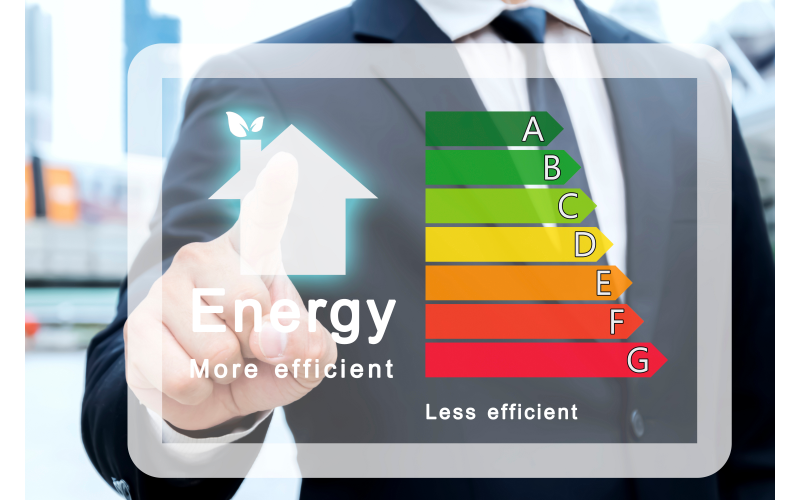
Future-Proofing Your Smart Home
Future-proofing your smart home involves anticipating technological advancements and ensuring that your home is equipped to adapt to evolving trends and innovations in the smart technology landscape. Here are key strategies to future-proof your smart home:
Scalability and Compatibility Considerations
When selecting smart devices and systems for your home, prioritize scalability and compatibility to accommodate future expansions and upgrades. Consider the following factors:
- Interoperability: Choose devices and systems that adhere to open standards and protocols, allowing for seamless integration with future technologies and platforms.
- Modular Solutions: Opt for modular smart home solutions that allow for easy upgrades and additions without requiring significant infrastructure changes or rewiring.
- Upgrade Pathways: Select devices and systems from reputable manufacturers that offer regular firmware updates and support for new features and functionalities over time.
Embrace Emerging Technologies
Stay informed about emerging technologies and trends in the smart home industry to proactively incorporate innovative solutions into your home. Consider the following emerging technologies:
- Artificial Intelligence (AI): Embrace AI-powered devices and systems that can learn and adapt to your preferences and behavior, enhancing automation and personalization capabilities.
- Internet of Things (IoT): Explore IoT devices and ecosystems that enable seamless connectivity and communication between smart devices, allowing for enhanced interoperability and automation.
- Edge Computing: Embrace edge computing solutions that process data locally within your smart home network, reducing latency and enhancing privacy and security.
Future-Proof Infrastructure
Invest in robust infrastructure and networking solutions to support the increasing demands of smart home technologies. Consider the following infrastructure considerations:
- High-Speed Internet Connection: Ensure reliable high-speed internet connectivity to support bandwidth-intensive smart home applications such as streaming, video conferencing, and cloud-based services.
- Mesh Networking: Implement mesh networking solutions that provide reliable and scalable connectivity throughout your home, reducing dead zones and signal interference.
- Cybersecurity Measures: Prioritize cybersecurity measures such as strong passwords, firmware updates, and network segmentation to protect your smart home devices and data from potential threats and vulnerabilities.
Plan for Technological Evolution
Anticipate future technological advancements and plan your smart home infrastructure and investments accordingly. Consider the following strategies:
- Long-Term Vision: Develop a long-term vision for your smart home that aligns with your lifestyle goals and preferences, allowing for flexibility and adaptability as technology evolves.
- Budget for Upgrades: Allocate the budget for future upgrades and enhancements to your smart home ecosystem, prioritizing investments based on emerging trends and technologies.
- Stay Educated: Stay educated about the latest developments in the smart home industry through online resources, forums, and industry publications, enabling informed decision-making and strategic planning.
By future-proofing your smart home with scalable and compatible technologies, embracing emerging trends, investing in robust infrastructure, and planning for technological evolution, you can ensure that your home remains at the forefront of innovation and technology for years to come.

Conclusion
In the rapidly evolving landscape of smart home technology, remodeling your home to integrate intelligent systems and devices offers numerous benefits, ranging from increased convenience and efficiency to enhanced security and sustainability. By embracing the principles of smart home remodeling, you not only transform your living space but also pave the way for a more connected and sustainable future.
Through careful assessment of your home’s needs, meticulous planning, and strategic selection of smart devices and systems, you can create a modern and efficient living environment that meets your unique lifestyle requirements. By maximizing efficiency, sustainability, and scalability, and by future-proofing your home against technological advancements, you ensure that your smart home remains relevant and adaptable in the years to come.
As you embark on your smart home remodeling journey, remember to stay informed about emerging technologies, seek guidance from experts, and remain open to innovative solutions that enhance the functionality and comfort of your living space. With thoughtful consideration and strategic planning, your smart home remodel has the potential to revolutionize the way you live, work, and interact with your environment.
In conclusion, transforming your home into a smart, connected oasis represents an investment in the future—a future defined by convenience, efficiency, and sustainability. Embrace the possibilities of smart home remodeling, and embark on a journey toward a more intelligent and harmonious way of living. Your smart home awaits, ready to welcome you into a new era of modern living.
